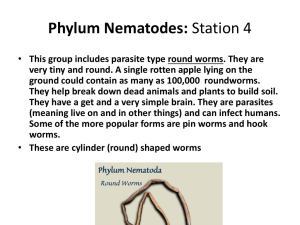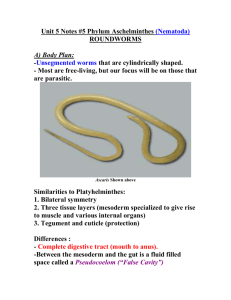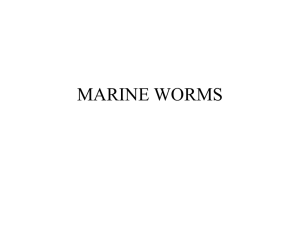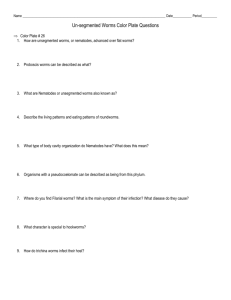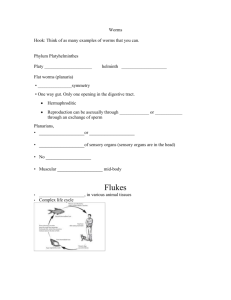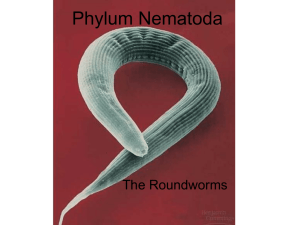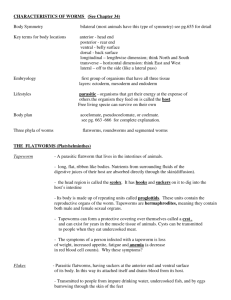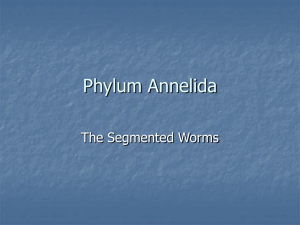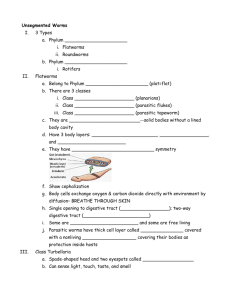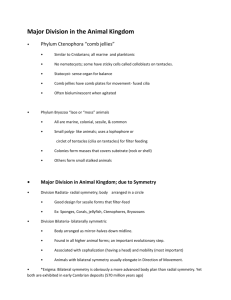Invertebrate Animal Phyla: Worms
advertisement
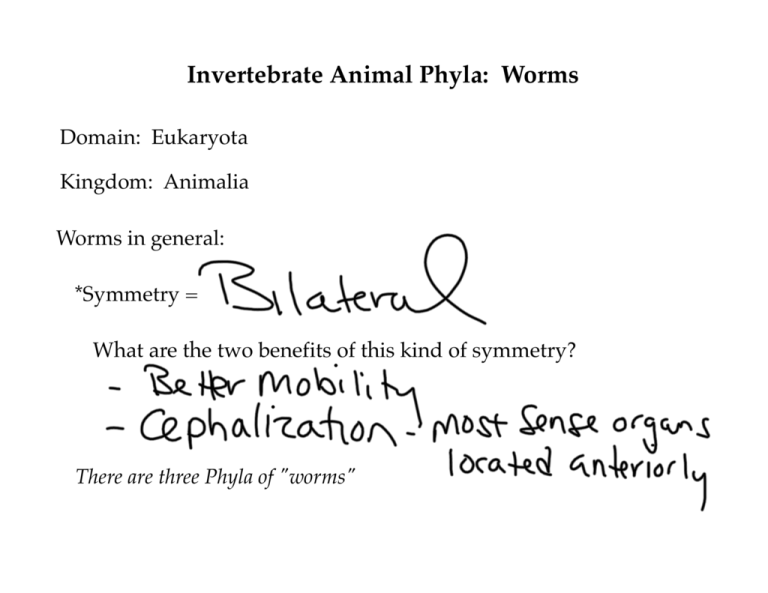
Invertebrate Animal Phyla: Worms Domain: Eukaryota Kingdom: Animalia Worms in general: *Symmetry = What are the two benefits of this kind of symmetry? There are three Phyla of "worms" PHYLUM PLATYHELMINTHES “flatworms” Ex. Planaria, Flukes, Tapeworms * 20,000 species * Can be parasitic (flukes, tapeworms) or free-living (planaria). * 1st animals in which tissues are organized into organs and organ systems. *No body cavity. * Flattened body dorsal and ventral. * Have a Central Nervous System (CNS). Define: * Well developed muscular system. * One opening to the gut (still). Mouth/Anus * Parasitic worms can have life cycles with multiple hosts. Planaria Tapeworm head (scolex) Tapeworm Fluke Flatworm cross Section Fluke Life Cycles PHYLUM NEMATODA “roundworms” Ex. Ascaris, hookworm, heartworm * 10,000-15,000 known species. 1/2 million estimates. Very underestimated because many are hardly seen because they are small or internal parasites. * Most are parasitic of plants and animals. Also found in great numbers in marine sediments rich in organic matter. *Body Cavity * Mostly small with cylindrical bodies usually pointed at each end. * One way digestive tract; separate mouth and anus! * Have a hydrostatic skeleton Define: * Very common parasites in most marine animals—sushi Nematodes Ascaris Roundworm cross section Nematode Life Cycles Why you don't have to worry about parasitic worms. * Sewage treatment * Water treatment * Cooking meat kills cysts and eggs * USDA inspects * Farming regulations for raising pigs PHYLUM ANNELIDA “segmented worms” Ex. Leeches, Earthworm, Seaworm (Nereis) * 12,000 species * Body consists of similar, repeating segments. *Body Cavity * Hydrostatic skeleton. * Flexibility provided by segmentation allows for efficient crawling and burrowing. * Closed circulatory system. Define: * Most marine worms are found in the Class Polychaeta. ~Each body segment has a pair of parapodia Function? Segmented Worm Cross Section * Marine worms have a ciliated, planktonic larval stage called a trochophore larva. Trochophore Larvae Trochophore larva have been studied because the mollusks also have this larval stage in their life cycle. * Some adults are predators of small prey. Others are deposit feeders Define: Leech Earthworm Seaworm Seaworm parapodia
